Top 20 Largest Ports in the World
The majority of the world’s largest and most active seaports are located in China. Ports in China account for 70% of the capacity of the 20 largest ports in the world.
The busiest ports in the world are determined on the basis of container (TEU) traffic. Singapore was the largest seaport in the world for years.
However, Shanghai took over the position in 2010 and has since become the largest and most active container port in the world, which makes China to become the largest trading nation in the world.
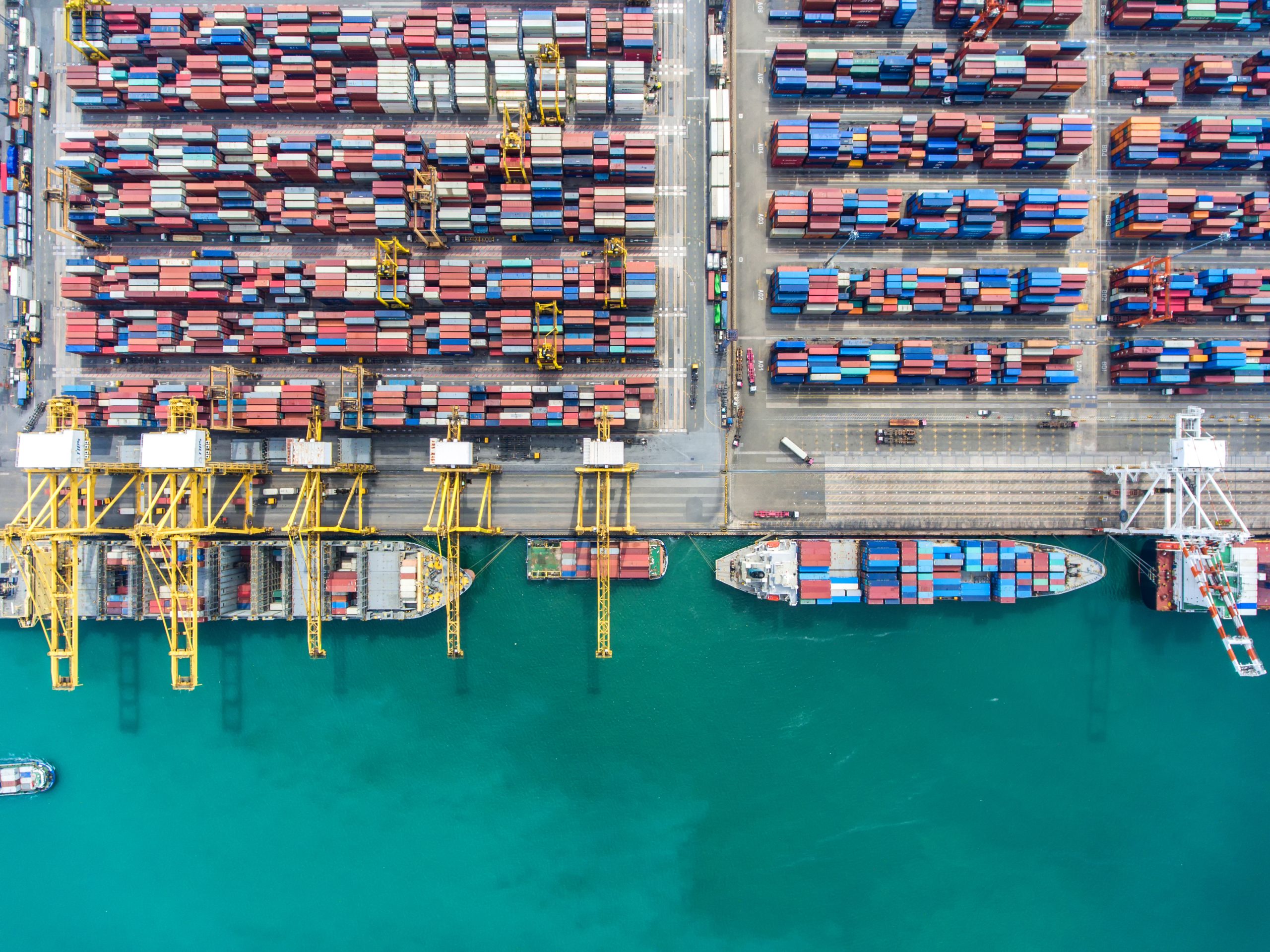
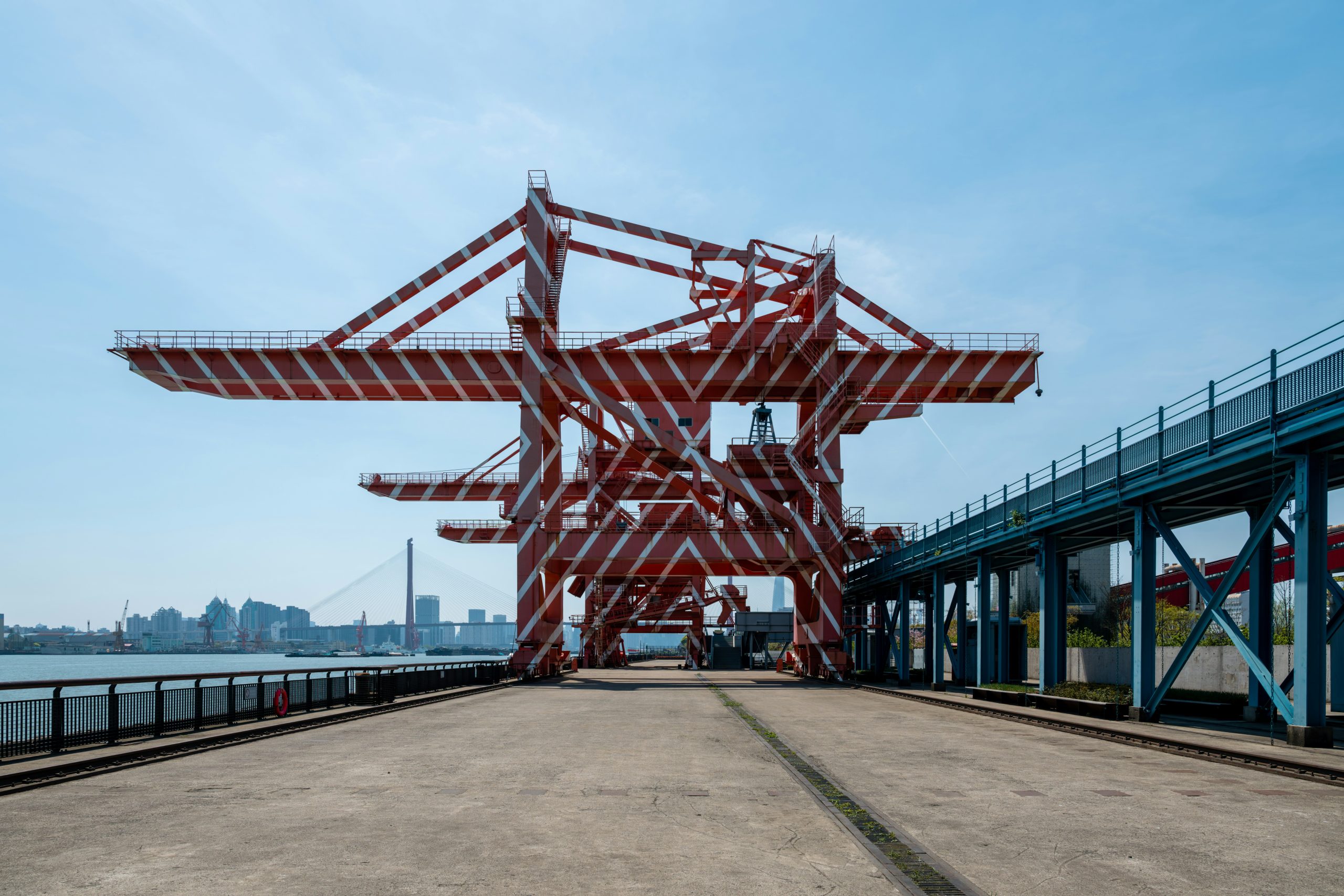
1 -Port of Shanghai, China
Facts and Importance: The Port of Shanghai, the world’s busiest container port, is an essential node in global trade and logistics. It sits at the mouth of the Yangtze River and encompasses an extensive area that serves as the primary gateway for China’s massive export and import activities. Handling a staggering volume of 47 million TEUs (twenty-foot equivalent units) annually, the port’s activities significantly contribute to China’s status as a global trading powerhouse.
Industries Served:
- Manufacturing: As the world’s factory, China utilizes the Port of Shanghai to export a vast array of manufactured goods ranging from electronics to industrial machinery.
- Automotive: The port plays a critical role in both the import of raw materials and components for vehicle manufacturing and the export of finished vehicles.
- Consumer Goods: With access to an extensive distribution network, the port efficiently handles consumer products, serving major markets around the globe.
Example: A multinational electronics company uses the Port of Shanghai to manage its supply chain efficiently. By employing advanced freight forwarding and logistics software, the company can synchronize its manufacturing output with global demand, ensuring timely deliveries and minimizing storage costs. Linbis logistics software provides real-time tracking and automated customs clearance, enhancing the company’s ability to navigate the complexities of international trade seamlessly.
2 -Port of Singapore
Facts and Importance: The Port of Singapore is a pivotal maritime hub in the heart of Southeast Asia and is recognized as one of the world’s busiest ports. It plays a crucial role in the nexus of international trade, facilitating the flow of goods across continents. With its strategic location on major sea routes, it connects to over 600 ports in 123 countries, making it integral to global logistics networks.
Industries Served:
- Manufacturing: The port is a vital conduit for the manufacturing sector, handling a wide range of goods from electronics to pharmaceuticals.
- Oil and Gas: Singapore’s port acts as a key transfer point for oil and gas products, supported by its extensive infrastructure for refining and storage.
- Consumer Goods: The port also handles a significant volume of consumer goods, supporting Singapore’s position as a retail hub in Asia.
Supply Chain Uses Port of Singapore
Example: A notable example of the port’s impact can be seen in the electronics industry. A major electronics manufacturer uses the Port of Singapore to import components from various Asian countries and to export finished products globally. The manufacturer relies on advanced logistics software to manage the complex supply chain operations efficiently. This software, integrated with real-time data from the port’s operations, helps in scheduling shipments, managing inventory, and ensuring timely delivery of components and finished goods.
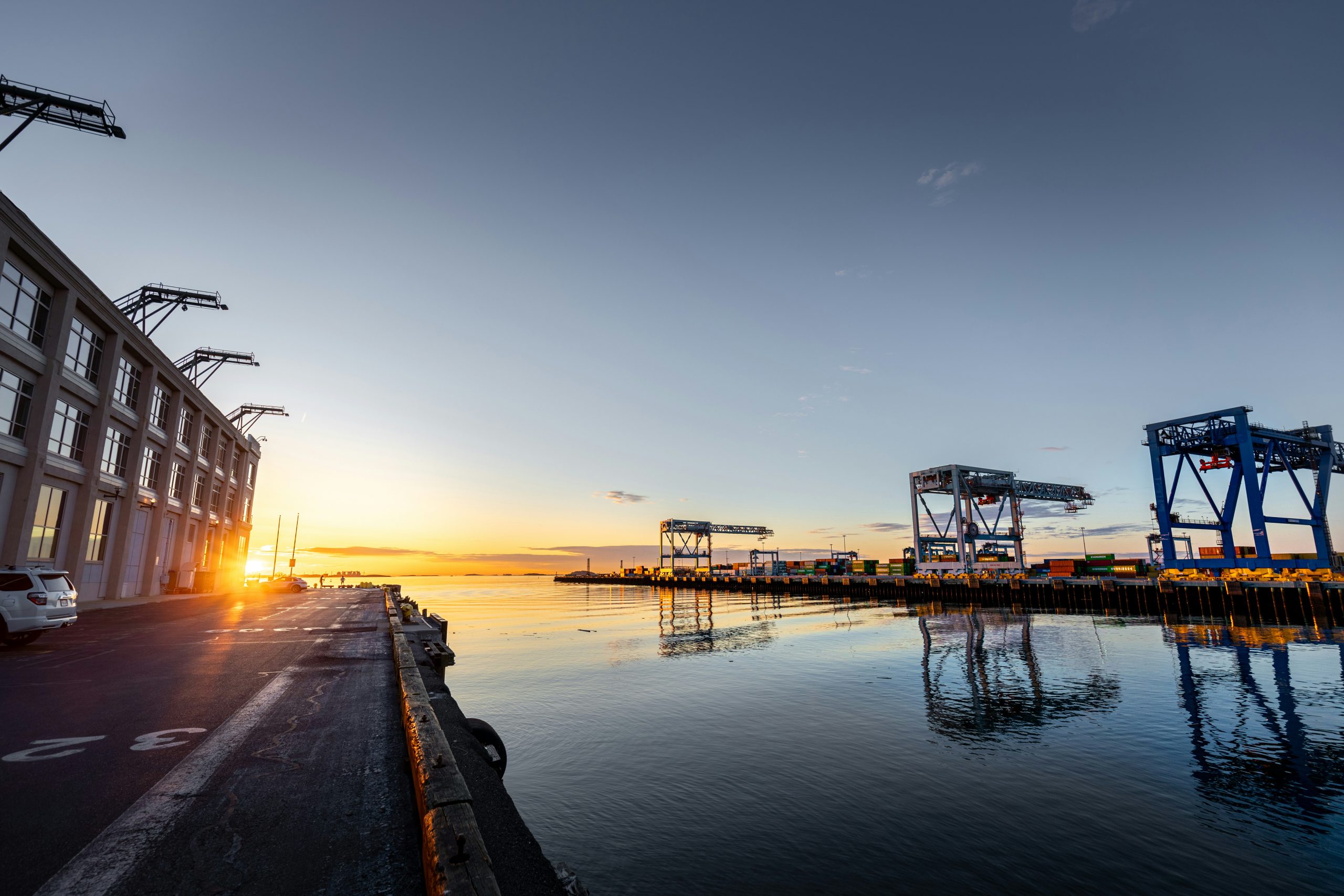
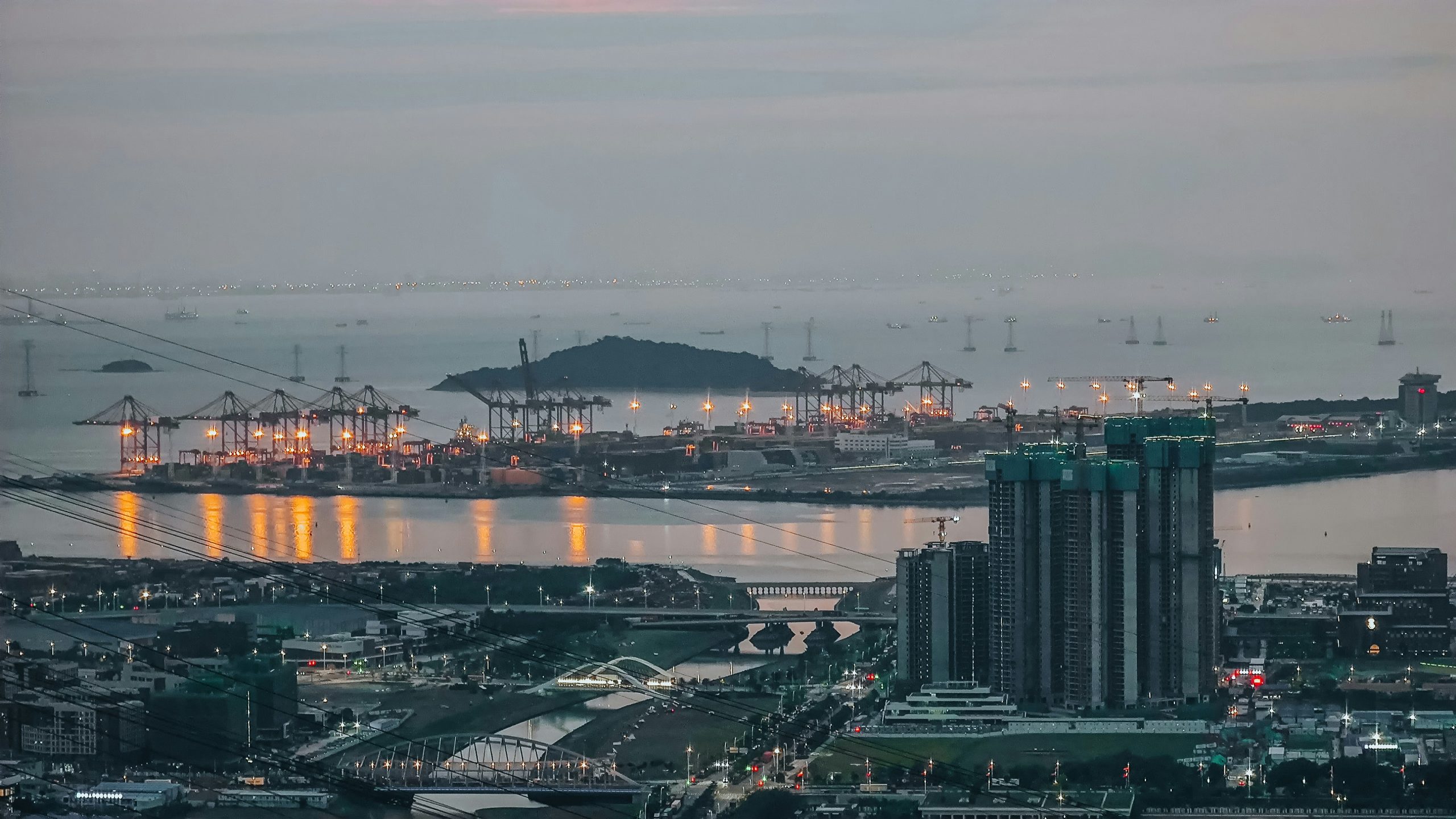
3- Port of Shenzhen, China
Facts and Importance: The Port of Shenzhen stands as one of the busiest and most dynamic shipping hubs globally, situated in the economically vibrant Pearl River Delta. It’s a key gateway for international trade, especially for China’s southern region, handling over 30 million TEUs annually. Its strategic location and state-of-the-art facilities make it integral to global logistics, serving numerous industries and supporting massive cargo volumes.
Industries Served:
- Automotive: The port is crucial for the automotive industry, supporting both the import of parts and materials and the export of finished vehicles.
- Consumer Goods: Shenzhen’s port facilities are vital for the consumer goods sector, moving everything from household items to luxury goods.
- Furniture: The region around Shenzhen is known for its substantial furniture manufacturing capacity, with products exported worldwide via the port.
Supply chain Operation
Example: Consider a multinational furniture company that utilizes the Port of Shenzhen to distribute its products globally. This company leverages Linbis logistics and supply chain management software to streamline its operations. The software helps in scheduling shipments, managing warehouse inventory, and tracking containers in real-time as they move through the port. Linbis’s integration with customs services simplifies the legal complexities of international furniture shipping, ensuring compliance and timely delivery. This capability not only enhances operational efficiency but also improves customer satisfaction by reducing delivery times and increasing supply chain transparency.
4- Port of Ningbo-Zhoushan, China
Facts and Importance: The Port of Ningbo-Zhoushan is a critical maritime gateway and the largest in terms of cargo tonnage, handling over 1.25 billion tonnes of cargo annually. Located in Zhejiang Province, it serves as a major node in the Belt and Road Initiative, enhancing China’s connectivity with global markets. The port’s extensive capabilities make it a cornerstone of international trade and logistics.
Industries Served:
- Agricultural Products: As a significant entry point for agricultural imports, Ningbo-Zhoushan facilitates the distribution of grains and other perishables, crucial for meeting China’s domestic demand.
- Construction Materials: The port is pivotal for importing construction materials like steel and cement, supporting China’s vast infrastructure projects.
- Chemicals and Raw Materials: Serving the chemical industry, the port handles a variety of bulk and containerized chemical products, essential for various industrial processes.
Example of Supply Chain Software Usage:
Consider a global construction company that imports large quantities of steel and cement through the Port of Ningbo-Zhoushan. This company utilizes Linbis supply chain management software to optimize its logistics operations. The software helps schedule shipments, manage inventory in real-time, and coordinate with local transportation for timely delivery to construction sites. Linbis also facilitates seamless customs clearance and documentation management, ensuring compliance and preventing delays. This integration not only streamlines operations but also provides transparency and enhances efficiency in managing the supply chain from port to project site.
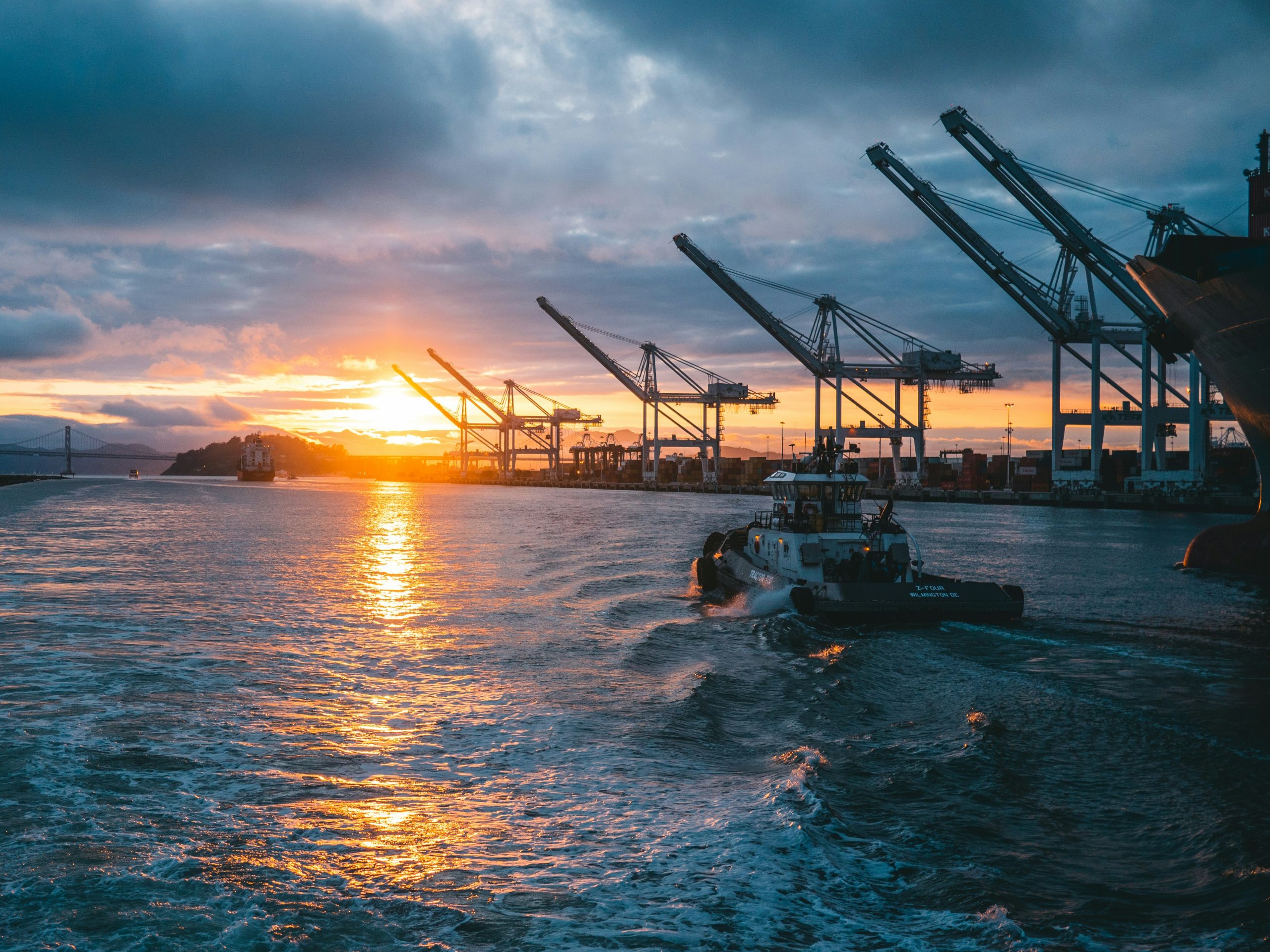
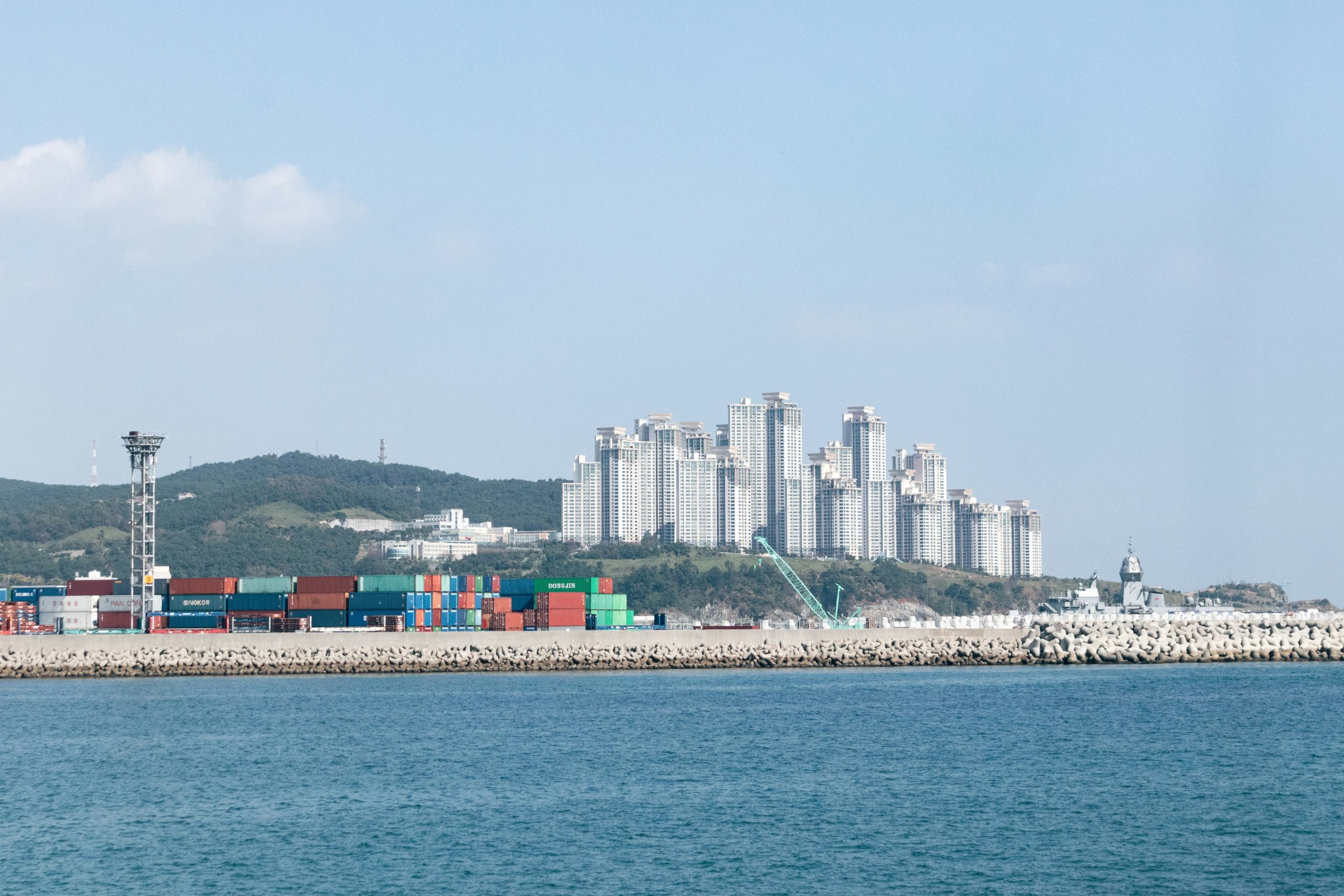
5- Port of Busan, South Korea
Facts and Importance: The Port of Busan, located at the southeastern tip of the Korean Peninsula, is the largest port in South Korea and ranks as the fifth busiest in the world. Serving as a critical hub for trade between Asia and Europe, it handles a diverse range of cargo, making it a vital component in international logistics networks. The port’s strategic location and advanced facilities support extensive trade routes and make it a key player in the global shipping industry.
Industries Served:
- Automotive: The automotive industry relies heavily on the Port of Busan for the import of components and export of finished vehicles, utilizing its efficient turnaround capabilities.
- Electronics: Given South Korea’s prominence in the electronics market, the Port of Busan is essential for the export of electronic goods, ranging from semiconductors to consumer electronics.
- Fashion and Textiles: The port also plays a significant role in the textile industry, exporting fashion items and fabrics to various international markets.
Example of Supply Chain Software Usage:
A prominent fashion retailer utilizes the Port of Busan to export textiles and apparel globally. By integrating Linbis logistics software, the company can seamlessly manage its supply chain from production to delivery. The software helps in scheduling shipments, tracking inventory levels in real-time, and managing documentation electronically, which simplifies the export process and ensures compliance with international trade regulations. This strategic use of technology not only streamlines operations but also provides scalability and flexibility in managing seasonal demands of the fashion industry.
6- Port of Hong Kong
Facts and Importance: The Port of Hong Kong, historically one of the world’s busiest and most strategically important ports, is located by the deep waters of the South China Sea. It is crucial for its role in containerized manufactured products and acts as a significant transshipment hub in the Asia-Pacific region. The port’s natural shelter and deep waters make it ideal for handling all types of vessels and supporting extensive maritime trade.
Industries Served:
- Consumer Electronics: The port is vital for the export of high-value electronics manufactured in Hong Kong and mainland China, serving major global markets.
- Textiles and Apparel: It supports the textile industry by facilitating the export of garments and fashion accessories to global markets, particularly the United States and Europe.
- Toys and Games: As a leading export product category from Hong Kong, toys and games frequently transit through this port, bound for diverse markets around the world.
Example of Supply Chain Software Usage:
Consider a toy manufacturer based in Hong Kong, utilizing the Port of Hong Kong to distribute products globally. This company employs Linbis supply chain management software to enhance its logistical operations. The software helps in planning the most efficient shipping routes, managing inventory levels, and ensuring timely delivery by integrating real-time data from the port’s operations. This not only streamlines the export process but also improves responsiveness to market demands, especially during peak seasons like holidays.

Purchase Order Management

Purchase Order Management
7- Port of Guangzhou, China
Facts and Importance: The Port of Guangzhou is the largest comprehensive hub for foreign trade in Southern China and plays a pivotal role in the region’s economic framework. Handling approximately 24.6 million TEUs in 2022, it stands as a critical node in global trade, facilitating vast amounts of cargo that stimulate both local and international markets.
Industries Served:
- Automotive: Guangzhou’s automotive industry heavily relies on the port for importing raw materials and exporting finished vehicles, making it essential for global supply chains in the automotive sector.
- Electronics: The port serves as a key export gateway for Southern China’s robust electronics manufacturing sector, dealing in everything from components to finished consumer electronics.
- Fashion and Apparel: With its capacity to handle a large volume of containerized cargo, the port supports the fast-paced demands of the fashion industry, exporting garments and textiles globally.
Example of Supply Chain Software Usage:
Consider a multinational automotive manufacturer that uses the Port of Guangzhou as a logistic hub to export cars. Utilizing Linbis supply chain management software, the company efficiently coordinates its logistics from manufacturing to shipment. The software enables them to schedule shipping, manage inventory, and ensure timely delivery of vehicles. By integrating Linbis, the company minimizes delays, optimizes operational costs, and enhances the transparency of its automotive supply chain
8- Port of Qingdao, China
Facts and Importance: The Port of Qingdao, situated on the Yellow Sea in Shandong Province, is a major hub for international trade and transportation. It’s known for its comprehensive facilities that accommodate a diverse range of cargo types, including bulk and container shipping. As of recent rankings, it is one of the top ten busiest ports in the world by cargo volume, highlighting its significant role in global supply chains.
Industries Served:
- Iron Ore and Crude Oil: Qingdao is the largest port in the world for iron ore imports and serves as a major hub for the oil industry, reflecting its critical role in supporting China’s heavy industries.
- Maritime Equipment: The port also plays a key role in shipping maritime equipment, facilitating the export of high-value machinery and tools essential for various global industries.
- Consumer Goods: With connections to over 450 ports in more than 130 countries, Qingdao is a vital exit and entry point for consumer goods moving in and out of China.
Example of Supply Chain Software Usage:
Imagine a company specializing in the export of maritime equipment using the Port of Qingdao. This company leverages Linbis logistics software to enhance its supply chain operations. Linbis distribution management software facilitates efficient planning and execution of shipments, real-time tracking of cargo, and streamlined customs clearance. This not only ensures timely deliveries but also provides adaptability in managing shipment schedules according to global demands, demonstrating Linbis’s ability to integrate complex logistics solutions at one of the world’s busiest ports.

Purchase Order Management
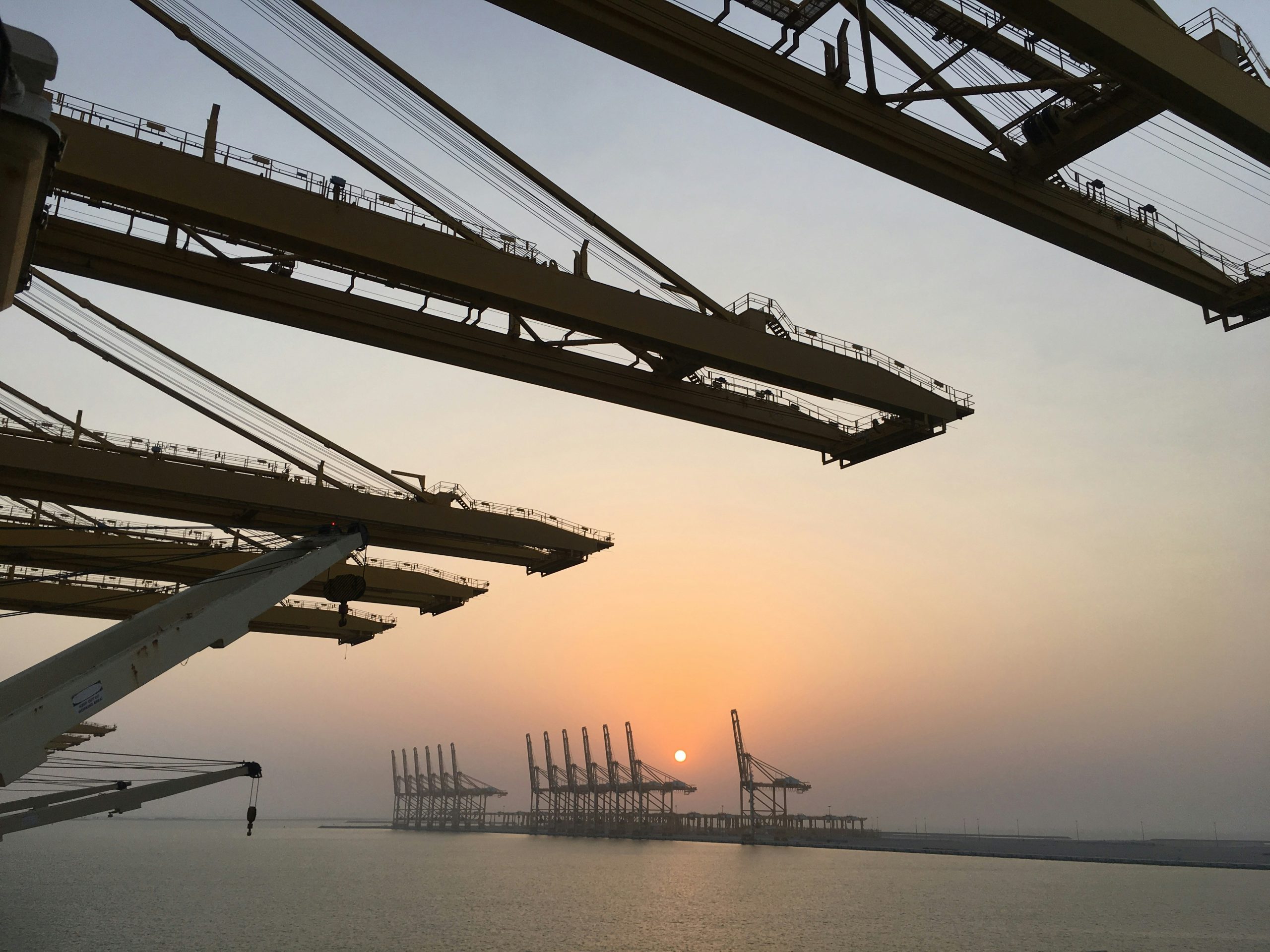
Purchase Order Management
9- Port of Jebel Ali, Dubai, United Arab Emirates
Facts and Importance: Jebel Ali Port, operated by DP World, is not only the largest port in the Middle East but also the ninth busiest port in the world. It’s a deepwater port located in Dubai, United Arab Emirates, and plays a crucial role as a global hub for the transshipment of goods. The port is known for its sizeable capacity and state-of-the-art facilities, which allow it to handle the largest container ships in operation today.
Industries Served:
- Oil and Gas: The port’s strategic location and facilities cater extensively to the oil and gas industry, facilitating the transport and storage of petroleum products.
- Retail and Consumer Goods: As a critical entry point for consumer goods into the Middle East, the port manages a significant volume of retail products.
- Heavy Machinery and Construction Materials: Given the ongoing infrastructure and construction boom in the region, Jebel Ali is pivotal in importing heavy machinery and construction materials.
Example of Supply Chain Software Usage:
Imagine a global retailer that uses Jebel Ali Port to distribute consumer goods throughout the Middle East. The retailer employs Linbis logistics software to manage its complex supply chain needs effectively. This software aids in optimizing container loading and unloading schedules, streamlining customs clearance processes, and providing real-time tracking of shipments. By utilizing Linbis, the company ensures efficient operations at the port, minimizing delays and reducing costs, which is crucial for maintaining a competitive edge in the fast-paced retail industry.
10- Port of Tianjin, China
Facts and Importance: The Port of Tianjin is the largest port in Northern China and serves as the main maritime gateway to Beijing. Positioned strategically on the Bohai Bay, near the Chinese capital, it is one of the busiest ports in the world. Handling significant cargo volumes, Tianjin is critical for facilitating trade not only within China but also internationally. The port extends its trade connections to over 800 ports in more than 200 countries and regions, showcasing its vital role in global supply chains.
Industries Served:
- Manufacturing: The port is a hub for importing raw materials used in manufacturing and exporting finished products, making it a cornerstone for China’s extensive manufacturing sector.
- Automotive: It supports the automotive industry by managing the import of components and the export of completed vehicles.
- Technology and Electronics: As a key player in the technology supply chain, the port handles electronics and high-tech items, supporting one of China’s leading export categories.
Example of Supply Chain Software Usage: Consider a scenario where a large automotive manufacturer uses the Port of Tianjin to import components used in car manufacturing. The company utilizes Linbis logistics software to streamline its operations at the port. This software helps in managing the supply chain effectively by providing tools for inventory management, shipment scheduling, and real-time tracking of components from arrival at the port to their assembly in manufacturing plants. Linbis also facilitates faster customs clearance and ensures compliance with trade regulations, thereby enhancing the efficiency and reliability of the automotive supply chain.

Purchase Order Management
Find out how Linbis Distribution Management Software improve logistics.
Top 11 - 20 Largest Ports in the World
11- Port of Klang, Malaysia
The port of Klang is the largest port in the country, but the eleventh largest and busiest in the world. It is located about 6 kilometers southwest of Klang City and 38 kilometers southwest of Kuala Lumpur.
12- Port of Rotterdam, Netherlands
The port with a nearby industrial complex is approximately 42 km long and covers an area of 12,426 ha.
It is the only port in northwestern Europe that offers unrestricted access to deep vessels.
13- Port of Kaohsiung, Taiwan.
The port of Kaohsiung is the number one largest port in Taiwan and the Thirteenth largest port in the world. It carries about 10.26 million units of cargo equivalent to twenty feet
14- Port of Antwerp, Belgium
The port of Antwerp is a port in the heart of Europe accessible to seagoing ships. It is the second largest seaport in Europe.
Antwerp lies at the upper end of the tides of the Scheldt. The estuary is navigable inland from ships with a gross tonnage of over 100,000 and 80 km inland.
15- Port of Dalian, China
The port handles about 70% of the region’s freight traffic and 90% of the container traffic in the region.
It has about 80 berths and is connected to around 99 shipping companies around the world.
16- Port of Xiamen, China
The Port of Xiamen is an important deep water port on Xiamen Island, on the adjacent mainland coast and along the mouth of the Jiulongjiang River in southern Fujian, China. It is one of the major ports in the Asia-Pacific region.
17- Port of Hamburg, Germany
The Port of Hamburg is a seaport on the Elbe in Hamburg, 110 kilometers from its mouth in the North Sea.
It is the largest port in Germany and is called “the gateway to the world”. In terms of throughput in TEU, Hamburg is the third largest port in Europe and the 17th largest port in the world.
18- Port of Los Angeles, USA
The Port of Los Angeles, the 18th largest and busiest port in the world, is a port complex that spans more than 7,500 hectares of land and waters along a 43-kilometer coastline.
19- Port of Tanjung Pelepas, Malaysia
Port of Tanjung Pelepas is a container port in Iskandar Puteri, Johor Bahru District, Johor, Malaysia, and is part of the global network of APM Terminals.
20- Port of Keihin Ports, Japan
This port in japan is the 20th largest port in the world, it has a volume of 7.61million TEU.
